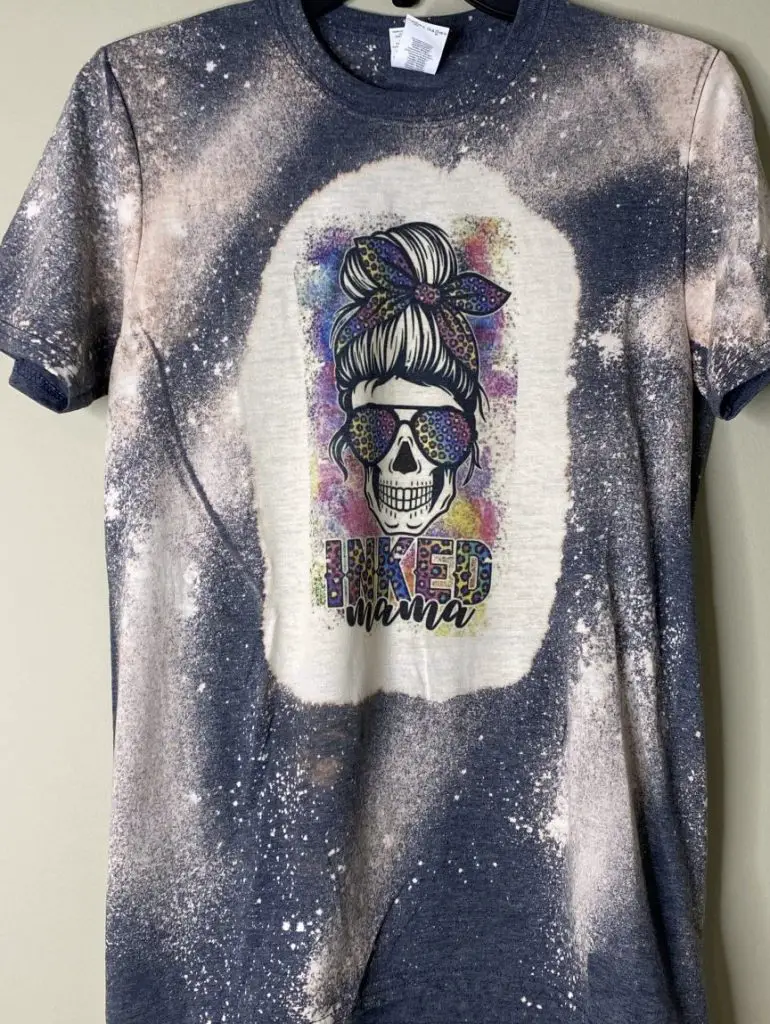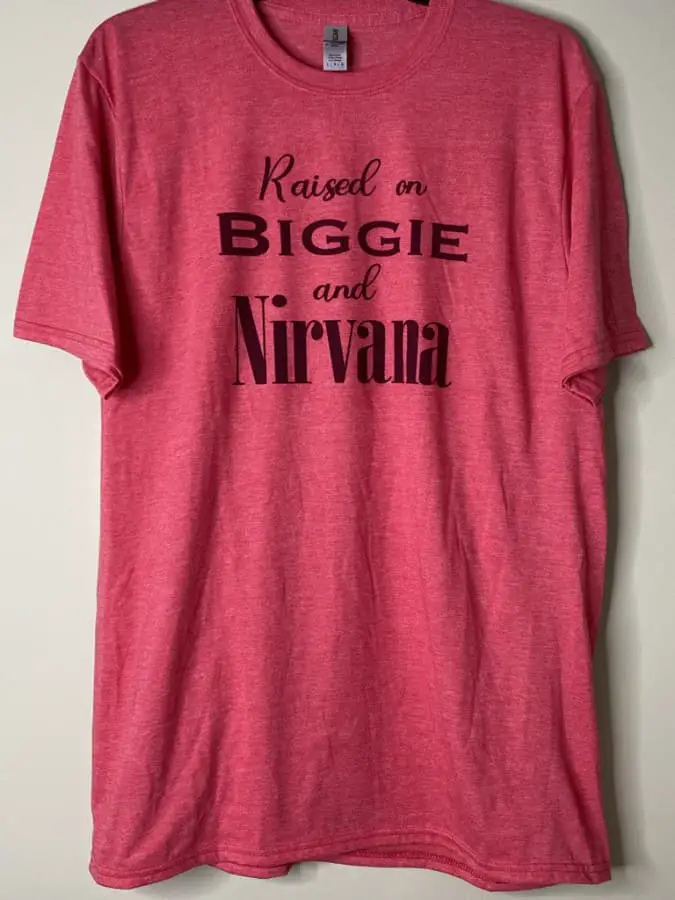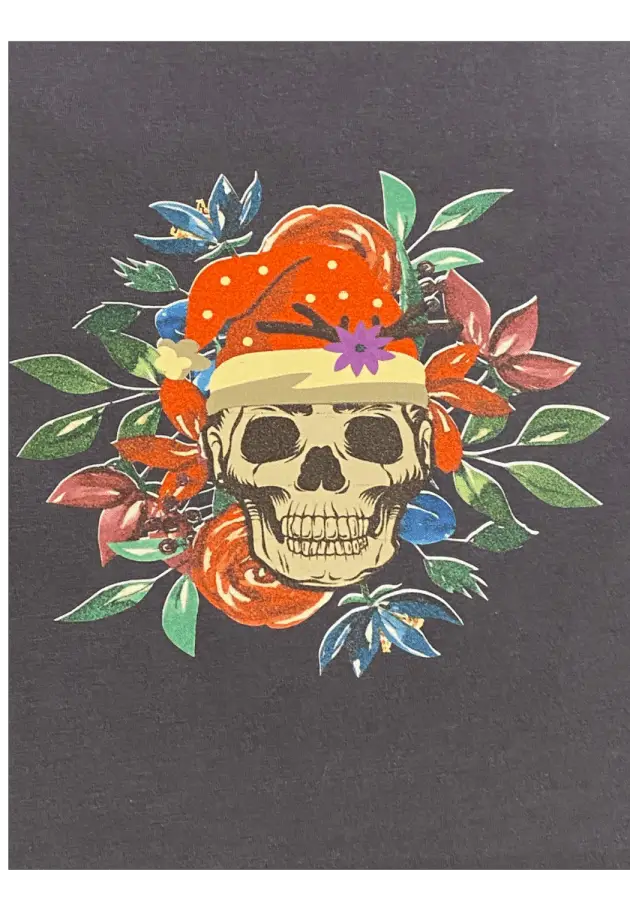If you’re interested in creating t-shirts with personalized designs, you’ve likely heard about sublimation. This process is commonly used to transfer images onto various fabrics. However, it’s almost impossible to sublimate onto dark colors, but why?
Traditional sublimation techniques don’t work on dark colors because sublimation forces colored ink into fabrics rather than laying it on top. Dark-colored materials that absorb sublimation inks don’t show the sublimated image because the sublimation ink is absorbed into the fabric, thus blending into the colors of the garment.

This guide will explore the process of sublimation and discuss how dark fabrics affect the sublimation process. I’ll also investigate ways to increase sublimation effectiveness when working with darker fabrics.
How Does Sublimation Work?
Before we delve into why sublimation doesn’t work on dark colors, it’s crucial to clarify what sublimation is and how it works.
Sublimation is the process of transferring a colored image or design onto a light-colored fabric. It’s commonly used to create custom t-shirts, tote bags, and other fabric items.
To start, a creator designs and prints an image onto heat transfer sublimation paper. They then position this design onto the fabric they’re hoping to alter.
After that, they place the fabric and sublimation paper into a heat press machine, covering the image with butcher paper. This device clamps onto materials and generates massive amounts of heat ranging between about 350℉ and 450℉ (176°C and 232°C).
The heat press machine transforms the ink on the sublimation paper into a gas. When this happens, the gaseous ink doesn’t drift into the air but instead sinks into the fabric beneath it, forming a permanent bond between the material’s fibers and the ink.
This process works well with light-colored fabrics but is exceptionally challenging when used to apply colored images to dark-colored fabrics.It is not impossible though! You can sublimate on dark colors with different methods. We will talk about that in a moment.
How Do Dark Fabrics Affect Sublimation?
It’s almost impossible to sublimate colorful designs and images onto dark fabrics. That’s because dark-colored materials absorb light instead of reflecting it.
Let’s use an example. Imagine that you’re standing in front of a sunlit window. Now picture yourself covering that window with sheets of white printer paper. Does the room suddenly become dark? More than likely, the light will pass through the paper, and the window will continue to be bright. But what would happen if you used black paper instead?
In this instance, you’d likely notice that the sunlight seems dimmed. This change is the result of the dark-colored paper absorbing the incoming light. This natural phenomenon is the reason why sublimation doesn’t typically work on dark colors.
Some shirts like this red show really dark colors well, however, other colors of ink like yellow and green will be off because they red will show thought the ink just as the light shows through the white paper.

How CAN You Sublimate on Dark-Colored Fabrics?
Standard sublimation techniques aren’t the best choice when transferring images onto dark-colored fabrics. Instead, they’re an excellent way to make your image vanish!
You can use the sublimation process when working with dark colors by using heat transfer vinyl (HTV) to place colored images on dark fabrics. You could also use bleach and hydrogen peroxide to lighten dark colors. While these methods are not sublimating directly on the garment, you will still get vibrant and detailed transfers.
Both of these methods work by altering the existing color of the shirt. Light-colored HTV acts as a bright platform for colored inks, while bleach whitens dark fabrics through oxidation. Keep in mind that there are only certain HTV types out there that sublimate well.
Using Heat Transfer Vinyl (HTV)
This technique is blissfully straightforward. The only item you’ll need (outside of traditional sublimation printing materials) is a HTV sheet, the types of HTV that can be used are:
- Light colored glitter
- Glow in the dark (not recommended for reds or black – they become muted)
- Siser Easy Subli
- Clear HTV
- Holographic HTV
After choosing and printing your desired image or design, you’ll want to trace the design onto an HTV sheet. If you have a Cricut or Silhouette cutting machine you can use those to cut the image instead of tracing and cutting by hand. You’ll then want to attach this shape to an adhesive carrier sheet.

Place the HTV and carrier sheet into the heat press for several seconds (according to manufacturer guidelines), then remove from the press and peel the carrier sheet off. The vinyl shape has now adhered to the dark fabric.
From this point, you sublimate your image just as you would when working with light fabrics. Naturally, you’ll want to ensure that your printed sublimation image is perfectly aligned before you place it into your heat press. Otherwise, some ink may disappear into the dark fabric surrounding the bright vinyl area.

Unfortunately, this method isn’t the longest-lasting solution to sublimating on dark colors. It will hold up as long as the vinyl holds. That’s because you’re not transferring the ink into the fabric. Instead, you’re imbuing the vinyl with colored inks.
As a result, the heat-pressed vinyl may fade, peel, or degrade over time. The sublimated image and its colors are also likely to disappear, especially after multiple washes or long-term sun exposure.
Using Bleach and Hydrogen Peroxide
This method is a little trickier, as it involves caustic chemicals. So before you get started, be sure to slip on a pair of thick latex or vinyl gloves and some protective eyewear.
A plastic apron is also an excellent additional piece of gear, as it can protect your clothing from accidental bleach splatter. Once you’re wearing suitable safety gear, it’s time to begin working with your dark fabric.

Essentially, this process consists of seven steps:
- Prepare your fabric.
- Trace and cut your sublimation design using adhesive vinyl.
- Adhere the vinyl sheet to your fabric.
- Cover the exposed fabric with a nonporous material.
- Seal the nonporous material to the borders of the vinyl cutout.
- Apply bleach to the exposed fabric area in the vinyl sheet.
- Dab the bleached area with hydrogen peroxide.
Final Thoughts
Sublimation doesn’t work on dark-colored fabrics because the ink transferred to those fabrics is entirely absorbed into the material. Since dark hues absorb light instead of reflecting it, colored inks tend to disappear into dark-colored fabrics during the sublimation process.
That said, you may be able to sublimate onto dark colors by using carrier sheets, fabrics sheets, or a combination of bleach and hydrogen peroxide. The best option for you depends on your budget and personal preference.
Be sure to check out some other nifty functional craft ideas through our other posts here on Craft-ILY as well as checking out some videos on DIY and How To’s over on YouTube. Look for “Crafting Unedited” or just click the name in blue to see!
